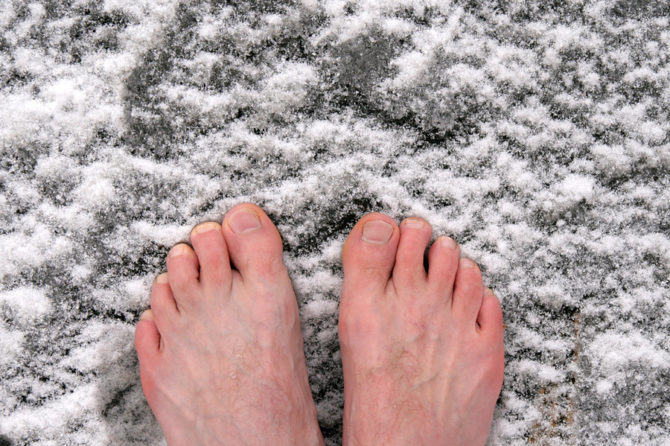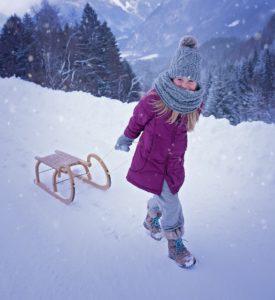
Frostbitten Toes…Oh No!
‘Tis the season…
…for cold injuries that is!
If you’re going outside this winter, you need to be aware of the different types of cold injuries, what they feel and look like, and how to treat them. Cold injuries can be temporary or serious and life-threatening. Keep an eye out for these common cold-related problems.
Hypothermia
Hypothermia occurs when the body is losing heat faster than it can produce it. The average body temperature is 98.6 degrees. Hypothermia begins to set in when the body drops below 95 degrees. Hypothermia occurs in three stages
- Increased shivering and reduced blood circulation
- Weak pulse, slow breathing, confusion, and lack of coordination
- Shivering ceases, weak or absent respiration and pulse, loss of consciousness
If you or someone you’re with is experiencing hypothermia, get them to warmth immediately. Remove any wet clothing and wrap the affected person in blankets. Warm, non-alcoholic drinks and hot-water compresses on the neck, chest, and groin areas can help with rewarming.
Frostnip
Frostnip is the first stage leading to frostbite. Blood vessels in the skin constrict to direct blood flow and heat to the internal organs. Frostnip mostly occurs on exposed skin such as ears, noses, and fingers. The skin may turn pale or bright red and feel extremely cold to the touch. Numbness in the affected area is common. Frostnip is generally not serious and can be combatted by seeking warmth. Do not use direct heat as you may not be able to correctly gauge temperature due to numbness.
Frostbite
Frostbite occurs when the extremities are exposed to extreme cold. In mild or superficial frostbite, ice crystals form within the top layers of the skin. Skin changes from red to pale white and the affected extremity may tingle or even hurt with a pins-and-needles feeling. Numbness soon follows. In severe frostbite, ice crystals penetrate through the skin to the tissue beneath. Pain may dissolve as numbness sets in. Frostbite can result in permanent tissue death at this stage.
Treatment for both superficial and severe frostbite involves a gradual rewarming of the body. Never try to rewarm with direct heat and do not attempt to thaw frostbite if there is any chance of refreezing as this can result in additional complications and a higher chance of extremity amputation.
Chilblains/Pernio
 Chilblains, also known as pernio, occur after exposure to prolonged cold but not freezing temperatures. Chilblains can be recognized by sores or bumps that appear after exposure to cold. This can also result in redness, swelling, and itching. Unlike frostbite, chilblains are generally not dangerous and will recede over one to three weeks. However, open sores can lead to infection and further complications. Chilblains occurring on the feet should be treated by a podiatrist to avoid infection.
Chilblains, also known as pernio, occur after exposure to prolonged cold but not freezing temperatures. Chilblains can be recognized by sores or bumps that appear after exposure to cold. This can also result in redness, swelling, and itching. Unlike frostbite, chilblains are generally not dangerous and will recede over one to three weeks. However, open sores can lead to infection and further complications. Chilblains occurring on the feet should be treated by a podiatrist to avoid infection.
The best way to avoid a cold injury is to stay indoors and keep warm. If you do go outside, be sure to wear proper socks, gloves, and other winterwear to protect yourself from the cold. At the first sign of a cold injury, seek shelter and warmth immediately. If you’ve suffered a cold-related injury to your feet, make an appointment with the FAAWC today!
